TFW you go to sleep in 2015 tweeting in Spanish and wake up in 2021 as an "Elon" account, complete with @ElonMusk's current (as of July 6, 2021) profile pic. #RepurposedAccounts #LifeComesAtYouFast
cc: @ZellaQuixote
cc: @ZellaQuixote
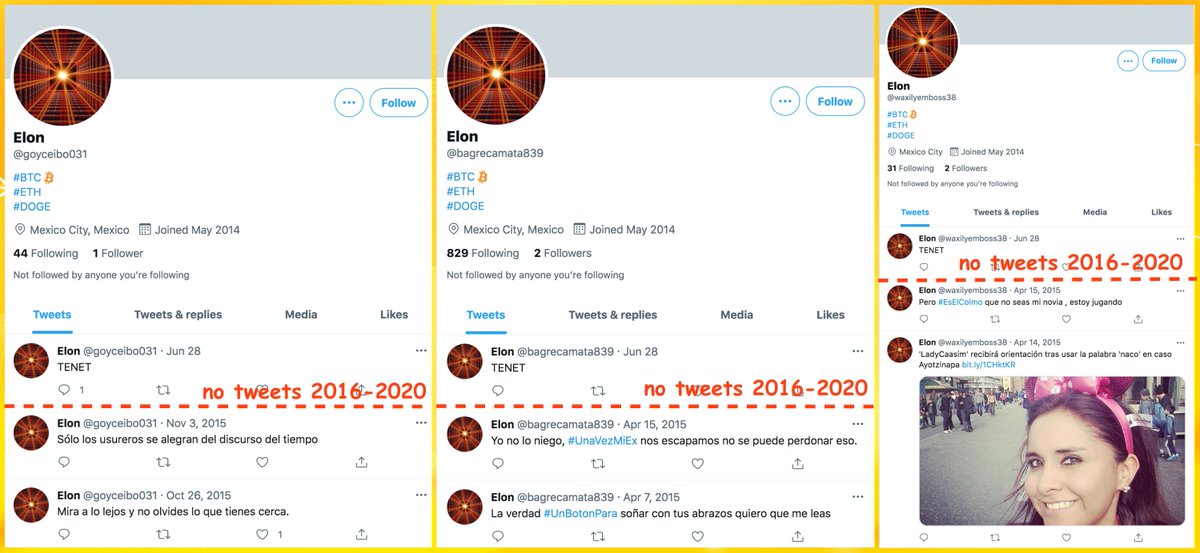
The recently awakened Elons are part of a larger network of 576 accounts created in May 2014. All accounts went dormant in late 2015, but some of them woke back up in 2021. Old tweets are almost all in Spanish, whereas new tweets are a mix of English, Indonesian, and Japanese. 


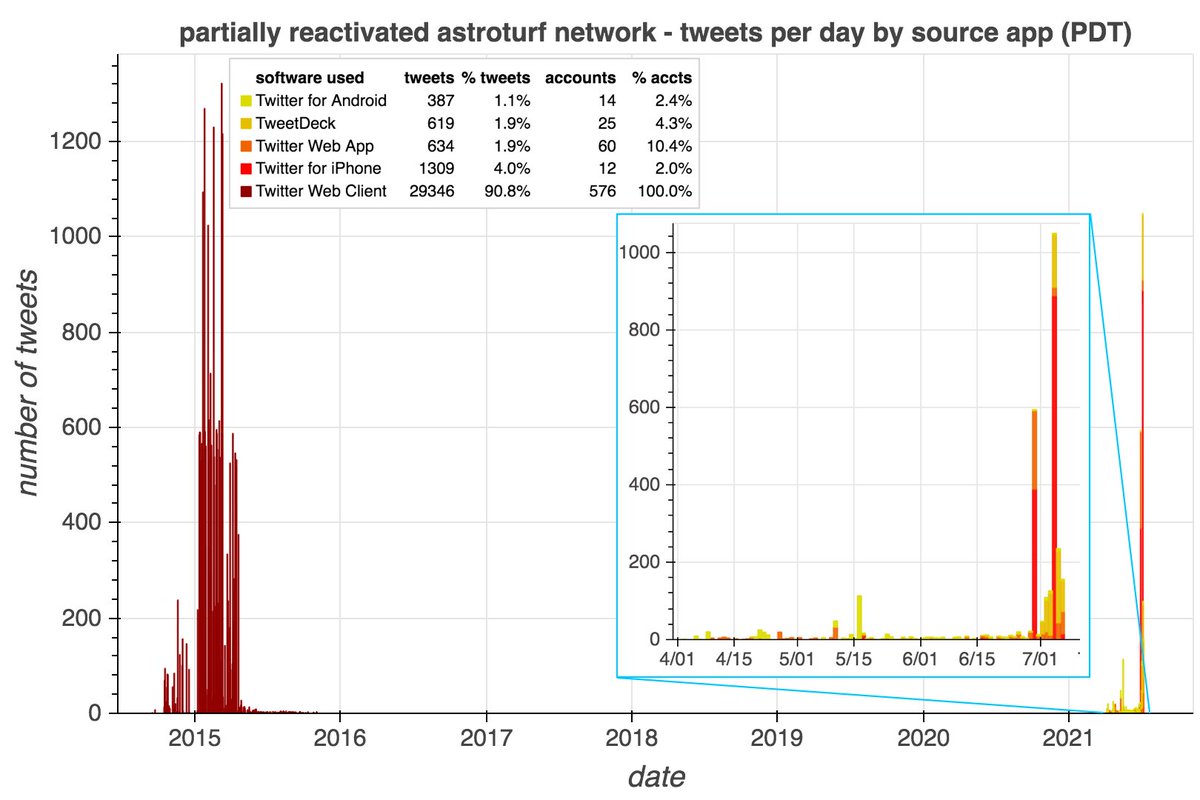
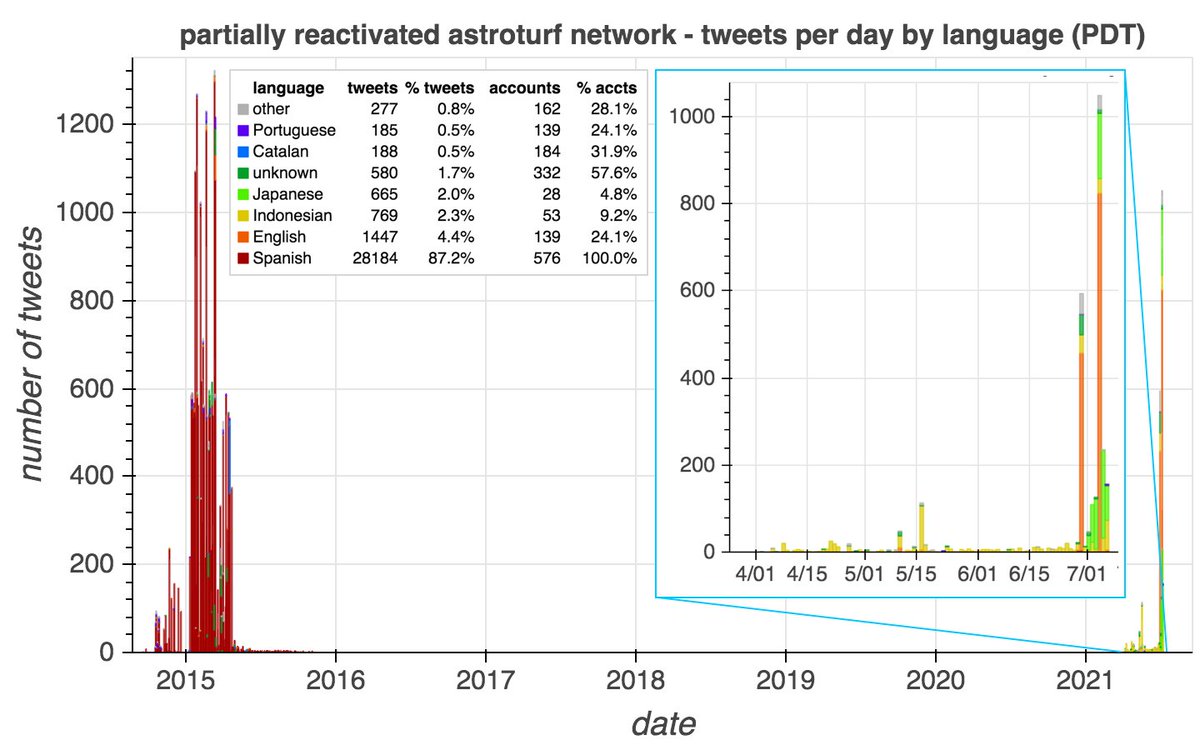
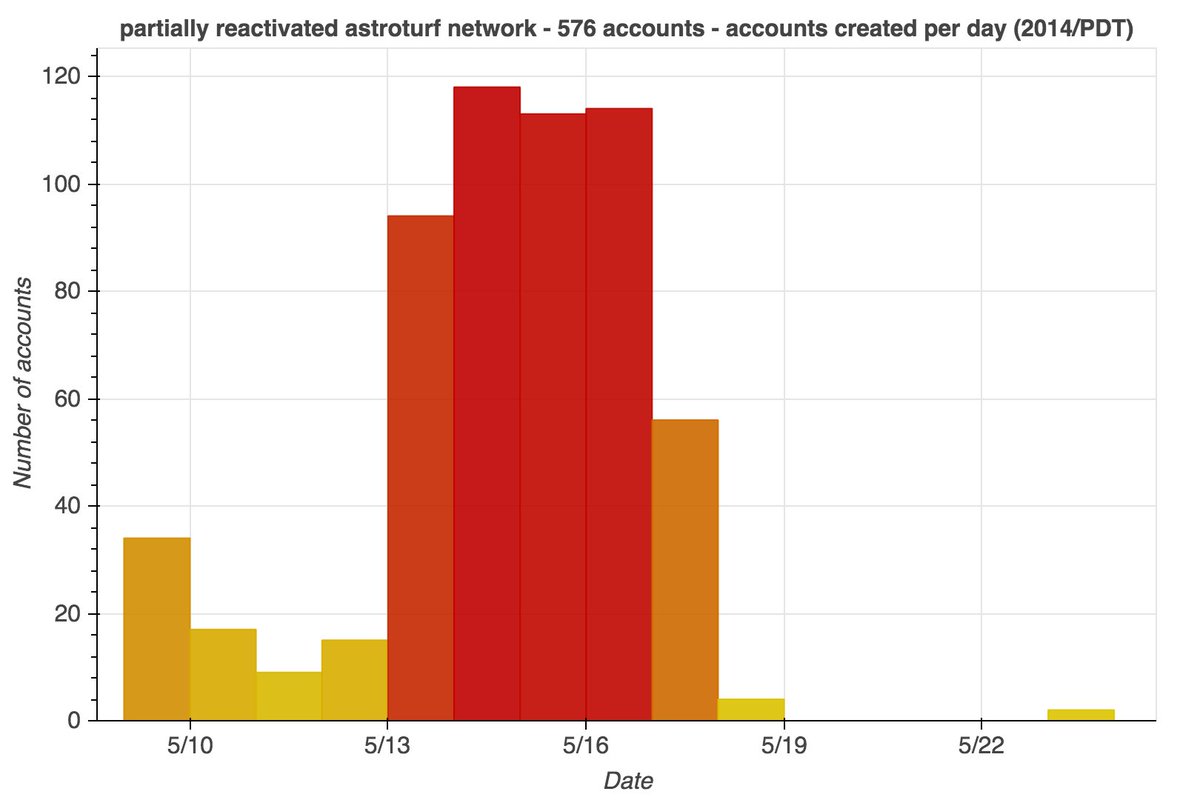
The old Spanish tweets from these accounts are highly repetitive, with many tweets duplicated verbatim on dozens of accounts. Those of the accounts that are still dormant have similar names and tweet counts, and fewer than three likes (most have zero). 

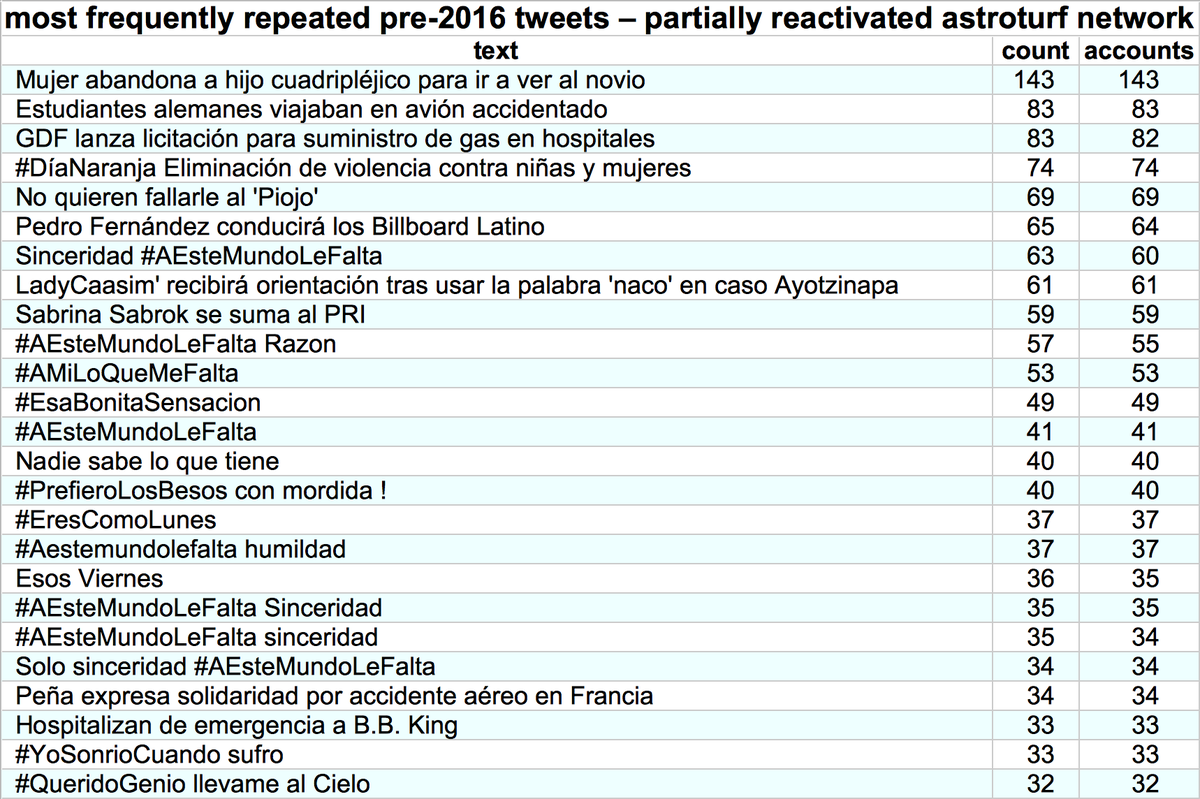
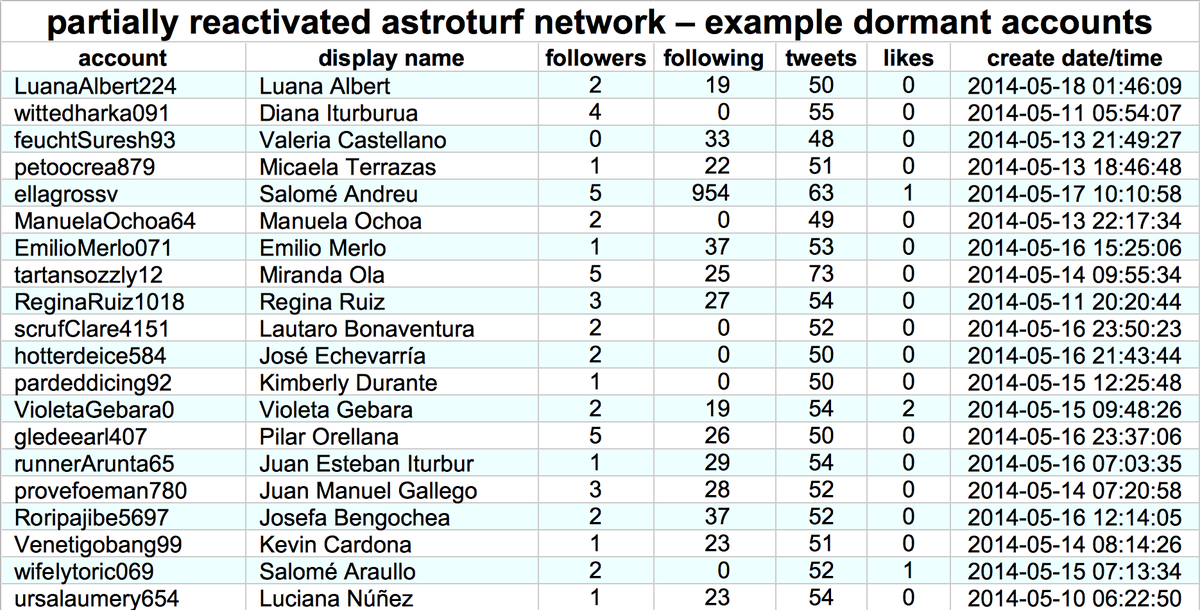
The accounts in this network all follow or are followed by other members of the network.
Those of the accounts that have reactivated fall into a few groups:
• 7 "Elon" accounts
• 28 Japanese loan spam accounts
• 7 Indonesian cryptocurrency accounts
• 41 other accounts
Those of the accounts that have reactivated fall into a few groups:
• 7 "Elon" accounts
• 28 Japanese loan spam accounts
• 7 Indonesian cryptocurrency accounts
• 41 other accounts

First, we have seven "Elon" accounts: @goyceibo031, @bagrecamata839, @mahmalKory032, @pertlygagor024, @clumsybum74334, @nakerTshi15239, @waxilyemboss38. It's unclear what the purpose of these accounts is, but a few have tweeted the word "TENET". 

Next, we have a network of 28 Japanese-language accounts with cartoon avatars promoting an online lender. (As always, take Google's translations of the tweets with a grain of salt.) 


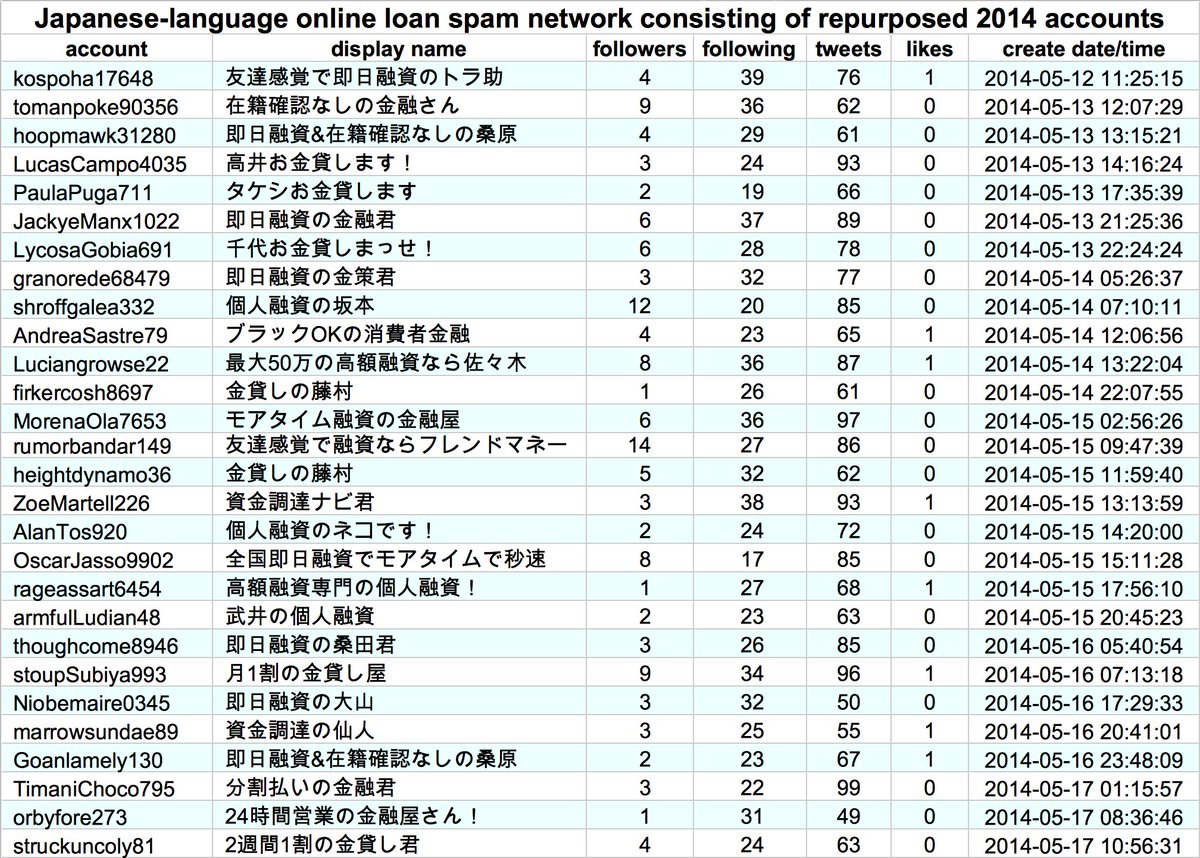


The 28 online lending astroturf accounts send most of their tweets via TweetDeck, with occasional tweets via the Twitter Web App. With a few exceptions, they operate on extremely similar schedules. 



Third, we have a group of seven Indonesian-language accounts that amplify cryptocurrency accounts via both retweets and replies. These accounts mostly tweet via Twitter for iPhone, with some Twitter Web App usage as well. 





An additional 41 of the 576 accounts in the network have awakened from their multi-year slumber but do not fit into any of the above categories. Most of them tweet in Indonesian. 

• • •
Missing some Tweet in this thread? You can try to
force a refresh































